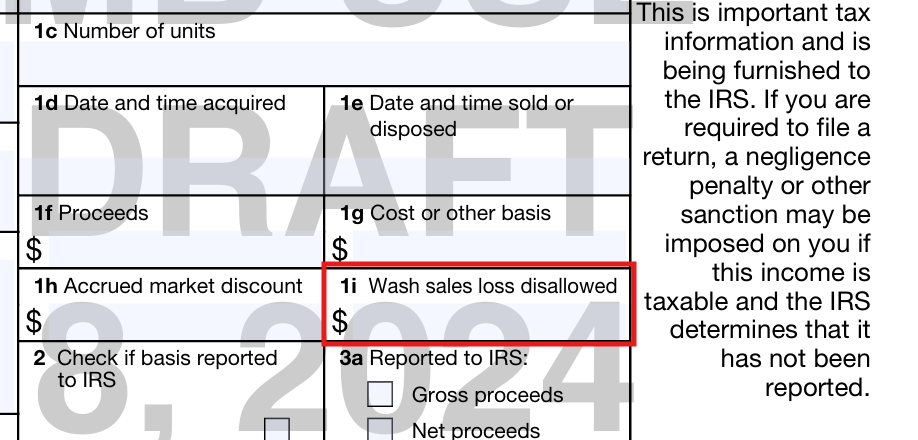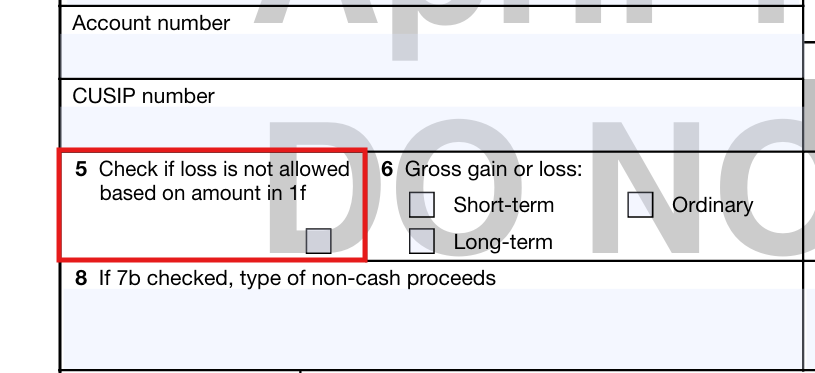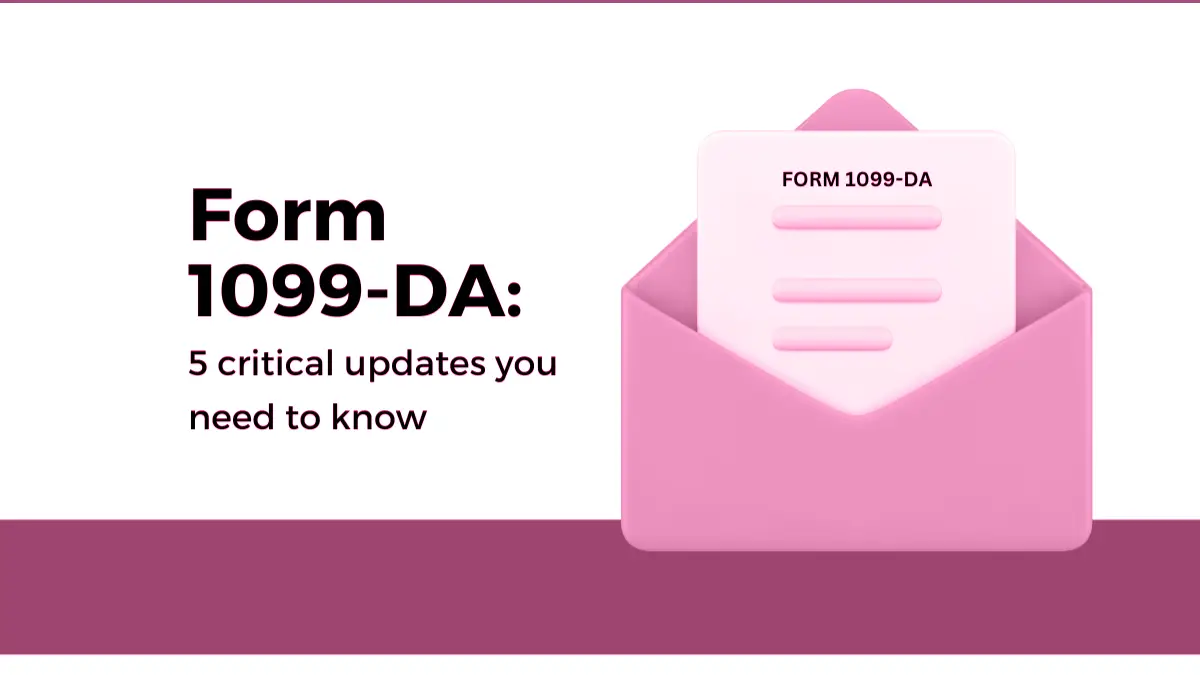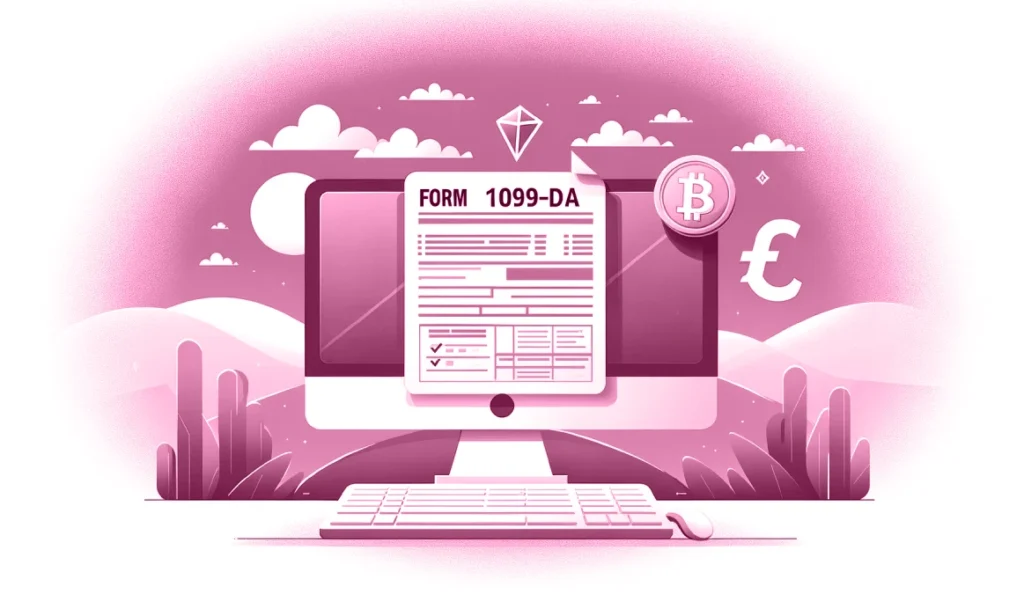The IRS just released the long-awaited draft of Form 1099-DA. For reporting digital assets it is the first tax form. The IRS released this draft form after announcing last year that they were planning to make rules about how brokers should report the sale or swap of digital assets. Once brokers, such as cryptocurrency exchanges, finish Form 1099-DA, they will send it to customers. This form will list all the digital assets the customers bought or sold. The new form aims to simplify crypto tax filing. However, taxpayers and dealers should still be aware of several potential challenges. In this blog, we will learn what form 1099-DA is, the reason for its creation, and 5 critical updates in the draft 1099-DA.
What is Form 1099-DA?
The IRS (Internal Revenue Service) designed Form 1099-DA, a hypothetical tax form, to address the specific reporting needs associated with digital asset transactions. It aims to streamline the reporting process for digital asset brokers and enhance compliance. Furthermore, it aims to boost transparency in the rapidly evolving cryptocurrency market. Some surveys show a lot of crypto users in the US are not properly filing their taxes. As digital assets become more famous, the US government is focusing on giving cryptocurrency users more tax reporting advice. This will help the users to follow the law.
President Biden also signed the Infrastructure Investment and Jobs Act (IIJA) in 2021 as a part of this effort. This law states that all crypto exchanges and platforms must give the details of deals involving digital assets to the IRS. Form 1099-DA was made so that brokers can send the IRS the information they need about deals involving digital assets. However, this law will likely start in the 2025 tax year, meaning the people will get the form in 2026. This new form makes the crypto taxation information easier to find and understand.
Why was Form 1099-DA created?
Here’s a detailed breakdown of why a draft form like 1099-DA would be created:
1. Increasing Popularity of Digital Assets
The number and types of digital asset trades have grown exponentially. Cryptocurrencies like Bitcoin, Ethereum, and others are becoming more well-known and accepted by the public. However, Existing tax forms and rules, designed primarily for traditional financial assets, struggle to fully capture the nuances of digital transactions. This makes things harder for tax officials.
2. Lack of Standardized Reporting
Right now, there is a lot of inconsistency in how tax officials receive information about transactions involving digital assets. Different systems and wallets employ a variety of methods for tracking and reporting transactions. Furthermore, a form like 1099-DA would try to make the reporting process more consistent. This would make it easier for the IRS to understand and check the details of these deals. This would lead to fewer mistakes and will also lead to inconsistencies in tax returns.
3. Clarifying the Definition of Brokers
There are some companies in the digital asset space that don’t fit the standard definition of a financial broker. These include decentralized exchanges and unhosted wallet providers. However, by clearly including these types of companies as traders on Form 1099-DA, the IRS would make it clear what these companies need to do to report information. This would close any gaps that may allow for less clear transaction reporting right now.
4. Ensuring Compliance with Existing Tax Laws
Cryptocurrencies aren’t fully regulated yet, so many users and even some service providers aren’t sure what their tax obligations are. By making the reporting requirements clear, draft form 1099-DA would help make sure that people follow the tax rules that are already in place.
5. Addressing Tax Evasion and Fraud
The anonymity of digital currencies and the difficulty of tracking transactions make them susceptible to criticism for facilitating tax evasion and financial scams. However, the IRS would be better able to keep track of these deals if they had a special form for them. This would make tax evasion and fraud less likely.
6. Adapting to Technological Advances
It is important for tax rules to change as technology does. Draft form 1099-DA would be a reaction to the technological advances in financial transactions. An ideal system for reporting digital asset transactions would consider the unique features of blockchain technology, such as its openness and traceability. This would necessitate developing specific reporting tools that work seamlessly with these features.
5 important inclusions in the Form 1099-DA
Let us break down the five inclusions of draft form 1099-DA.
1. “Unhosted wallets” have been included in the broker type section in Form 1099-DA
under the section titled “Broker type involved in transaction,” one of the categories listed is “Unhosted Wallet Provider.” An unhosted wallet is a type of cryptocurrency wallet that doesn’t need to be connected to a central site, like an exchange, in order to work. A Ledger hardware wallet is a common example of an unhosted wallet because it lets users store their digital assets safely away from an exchange.

The crypto companies have said that wallets that aren’t hosted should not be considered brokers to the IRS. The idea behind this point of view is that these wallets don’t actually make transactions easier for users; instead, they just give people the tools they need to safely handle their own assets.
However, the fact that the IRS chose to name unhosted wallets as possible brokers on Form 1099-DA suggests a different view. Decentralized finance (DeFi) systems like Uniswap let people use unhosted wallets to make trades directly. The people who use these wallets aren’t just storing their assets; they’re also making deals that brokers usually handle.
This way of looking at things by the IRS could make filing taxes more difficult, especially if you have to do it more than once. If a person uses their Ledger wallet to make a transaction on Uniswap, the unhosted wallet, and the DeFi platform might both send the same transaction to the IRS. This situation could cause confusion, so people need to be careful that their tax returns are correct and don’t accidentally over-report income.
2. Boxes 1a,1b in Form 1099-DA
As part of the new rule, digital asset brokers will have to put cryptocurrencies and other digital assets into groups, possibly using an official registry or list. The lack of a digital asset register raises concerns about how the IRS will implement this process. The uncertainty surrounding the IRS creating this record and managing the constant influx of new digital assets (up to 5,300 new tokens created daily) raises concerns. We face a big problem with this fast growth. Can the IRS keep up with how quickly this field changes? This is important because we need to know how the IRS plans to deal with these problems and if they can keep track of and sort an ever-growing number of digital assets without getting behind.

3. Boxes 11 – 12 in Form 1099-DA
The sections labeled 11a, 11b, 11c, 11d and 12a, 12b, 12c, and 12d in Form 1099-DA relate to specific details about digital asset transactions, particularly sales and transfers. Here’s a breakdown of each:
For Sales-Related Information:
11a (Sale Transaction ID – TxID): This is where you enter the digital asset’s unique identifier for the sale deal. The TxID helps the blockchain or distributed ledger system keep track of and confirm the transaction.
11b (Digital Asset Address): This is the address from which the transaction sent the digital asset. It could be a wallet or some other place to store digital things.
11c (Number of Units): Here, you record the quantity of the digital asset that was involved in the transaction. For example, if you sold 5 Bitcoins, you would enter ‘5’ in this box.
11d (Check if sale is not recorded on the distributed ledger): This box should be marked If the sale was not recorded on a blockchain or another type of distributed ledger.

For Transfer-Related Information:
Box 12a (Transfer-in TxID number): This box shows the transaction ID assigned to that digital asset transfer-in transaction.
Box 12b (Transfer-in Digital Asset Address): This box, documents the address of the digital asset transferred in. This identifies the digital wallet address that sent the digital assets.
Box 12c (Number of Units Transferred): This box documents the amount of the digital asset transferred in the transaction. Furthermore, specifying the number of units allows the IRS to ascertain the scale or value of the transaction, which may have implications for tax calculations.
12d (If transfer-in not recorded on the distributed ledger, provide transfer-in date and time): If a blockchain or distributed ledger didn’t record the transfer, you should fill out this section with the date and time of the transfer. This helps document non-ledger-based movements of assets.
4. Box 1i in Form 1099-DA
The note in Box 1i, labeled “Wash Sales Loss Disallowed,” on draft form 1099-DA doesn’t mean that every cryptocurrency transaction is now under the microscope for wash sales. It specifically applies to digital assets that are similar to stocks or securities—think of things like tokenized equities. Because these digital assets function very similarly to traditional stocks, they are subject to the same wash sale rules. So, this rule isn’t for all digital assets, just the ones that overlap with the more traditional securities world.

5. Box 5 in Form 1099-DA
When you mark Box 5, it means that you, as the taxpayer, cannot deduct a loss on your tax return, if this loss results from a significant change. Furthermore, this change could involve who controls a digital asset or rearrange its ownership structure, as Box 1f details the proceeds.

Furthermore, it’s the broker’s responsibility to inform you separately about any of these non-deductible losses. This means that aside from the standard reporting on Form 1099-DA, your broker should also provide a separate statement detailing these losses. This additional communication helps ensure you’re fully aware of the financial impacts and the tax implications of these transactions.
How Catax will help you with form 1099-DA
With the new IRS Form 1099-DA coming out soon, Catax wants to make your crypto taxes easy. We know every single detail about this future form and can help you follow all of the IRS’s rules. Furthermore, our platform automatically puts all of your cryptocurrency transactions into clear reports. From these reports, you can see how much you’ve made or lost. This makes it easy for you to file your taxes. Whether you trade once in a while or do a lot of deals every day, catax makes your life easy and stress-free.
Catax also understands how stressful it can be to deal with taxes. We have a helpful team that is always ready to answer your questions and help you understand digital asset taxation. You don’t just get a tax tool when you use Catax; you get a partner who wants to make your tax process as simple and safe as possible. Let us help you figure out Form 1099-DA so you can be rest assured.
FAQs on Draft Form 1099-DA
The IRS designed Form 1099-DA as a tax form to address the reporting needs for digital asset transactions, aiming to improve compliance and transparency in cryptocurrency markets.
The IRS introduced Form 1099-DA to standardize reporting, enhance transparency, ensure compliance with existing laws, and adapt to technological advances in the digital asset space.
Form 1099-DA is expected to be implemented starting from the 2025 tax year, with forms being distributed in 2026.
Key inclusions are categories for unhosted wallets as brokers, detailed reporting boxes for digital asset transactions, and guidelines for non-deductible losses due to significant changes in asset control.
Including unhosted wallets as brokers could complicate tax filing, potentially leading to duplicate reporting from wallets and decentralized finance platforms.
These boxes require details of sales and transfers of digital assets, including transaction IDs, addresses, and units involved, essential for accurate tax calculations.
Catax offers detailed support for cryptocurrency transactions, generating clear reports to simplify tax filing and further provides expert assistance for understanding digital asset taxation.



